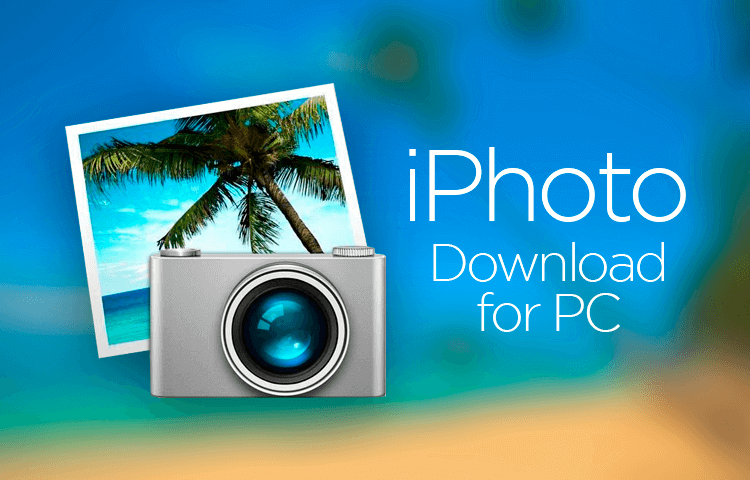

The butterfly keyboard generation – FIVE years of defective by design – also put us off. We're running 3 x 2011 MBP now as they are the only ones which can be repaired and upgraded. Of course we can rebuild from backups (which were a problem themselves for about six months to a year after the launch of APFS – totally unacceptable in a "pro" workflow.Īpple used to get a new MacBook Pro out of me every year or two. We just have no tools to fix them any more. And no APFS does not make all disk issues and directory structure issues go away. If you don't think not having Disk Warrior available to repair directory corruption on your startup drive is important, then either you aren't a pro or you haven't been working on Apple computers long enough. Major disk utility companies are *still* struggling to build working versions of their disk repair utilities: iPhoto lets you do more than you ever thought possible with your photos. It has been replaced by Photos in OS X 10.10. 3.4 Based on 199 user reviews Follow this app Developer website iPhoto overview Note: This is a legacy application. You can download Retroactive from GitHub and read through a wonderfully detailed guide on how to install and run Retroactive on macOS Catalina.ĪPFS might be nice, but Apple released it too early and inadequately tested (for pro use). iPhoto Version 9.4.3 Import, edit, and share your photos. Specifically, neither Aperture nor iPhoto are able to play videos or export slideshows, but aside from that all former functionality remains.

The former fully removes unneeded apps, and the latter instantly updates all of. Not all functionality is salvaged, but by and large the apps still run without much issue. We update our malware database regularly and CleanMyMac Xs Protection. If you do, it’s simply a matter of downloading Retroactive from GitHub, giving it the required permissions to alter the apps and letting it do its thing. In order to use Retroactive, you’ll need to make sure you still have a copy of Aperture or iPhoto still on your computer. The app has since been replaced with Apple’s Photos app, but whether for nostalgia purposes or something else, you can now run iPhoto. Likewise, Apple’s iPhoto app can also be modified to run in macOS Catalina with Retroactive.

If you’re one of those photographers who has loyally clung to Aperture, Retroactive should ensure you can continue to use the app without having to avoid the latest macOS update. Despite this, many clung on to the last update, which worked until macOS Catalina. Tyshawn Cormier is one of those programmers who has created an app called Retroactive that modifies both Aperture and iPhoto so the apps are usable on Apple computers running macOS Catalina.Īperture was effectively neutered back in 2014 when Apple announced it was ceasing development of the pro-oriented photo management and editing application. Thankfully, there are determined developers and programmers who are always looking for the next problem to solve. While plenty more apps (including all 32-bit apps) were killed off, two photo-specific apps macOS Catalina can no longer run include Aperture and iPhoto. I’m probably going to keep it around for a little while longer and delete it some time down the line.Apple’s new macOS Catalina operating system added plenty of new features, functionality and performance improvements, but in streamlining the experience, Apple also killed off a number of apps. You can actually delete the old iPhoto Library once you’ve verified that everything was successfully migrated.Īlso note that iPhoto has been removed from the Mac App Store, so before you uninstall it, be sure that you are 100% finished with it. Note: You can still open iPhoto, but keep in mind that any changes you make in iPhoto from this point forward will not appear in the Photos app, as they are two separate libraries. Safe with respect to your images and the iPhoto library. ADD for iPhoto was designed from the ground up to be safe. Step 9: Wait while all of your data and photos from iPhoto are imported into the new Photos app It is designed to work with iPhoto '11 (version 9.3) and will scan your library for duplicates that have accumulated over time and waste hard drive space. Step 8: Select the iPhoto Library and click Choose Library Step 6: Launch the Photos app, and it should state that Photos cannot find the System Photos Library. We do this to avoid having multiple libraries for the Photos app, and to prevent weird names like “Photo Library 2”

Step 5: If the Photos Library is empty as confirmed in Step 3, delete the Photos Library database from ~/Pictures. Verify that the Photos app is empty, which it should be on a new installation of OS X Yosemite 10.10.3 Step 4: Double click on Photos Library and it should launch the new Photos app. Step 3: Open ~/Pictures and you should see at least two photo libraries: one for the new-Photos Library- and one for the old-iPhoto Library Step 2: Close both the Photos app and iPhoto Step 1: Curate your iPhoto library and delete any duplicate files and update any meta data you wish to update


 0 kommentar(er)
0 kommentar(er)
